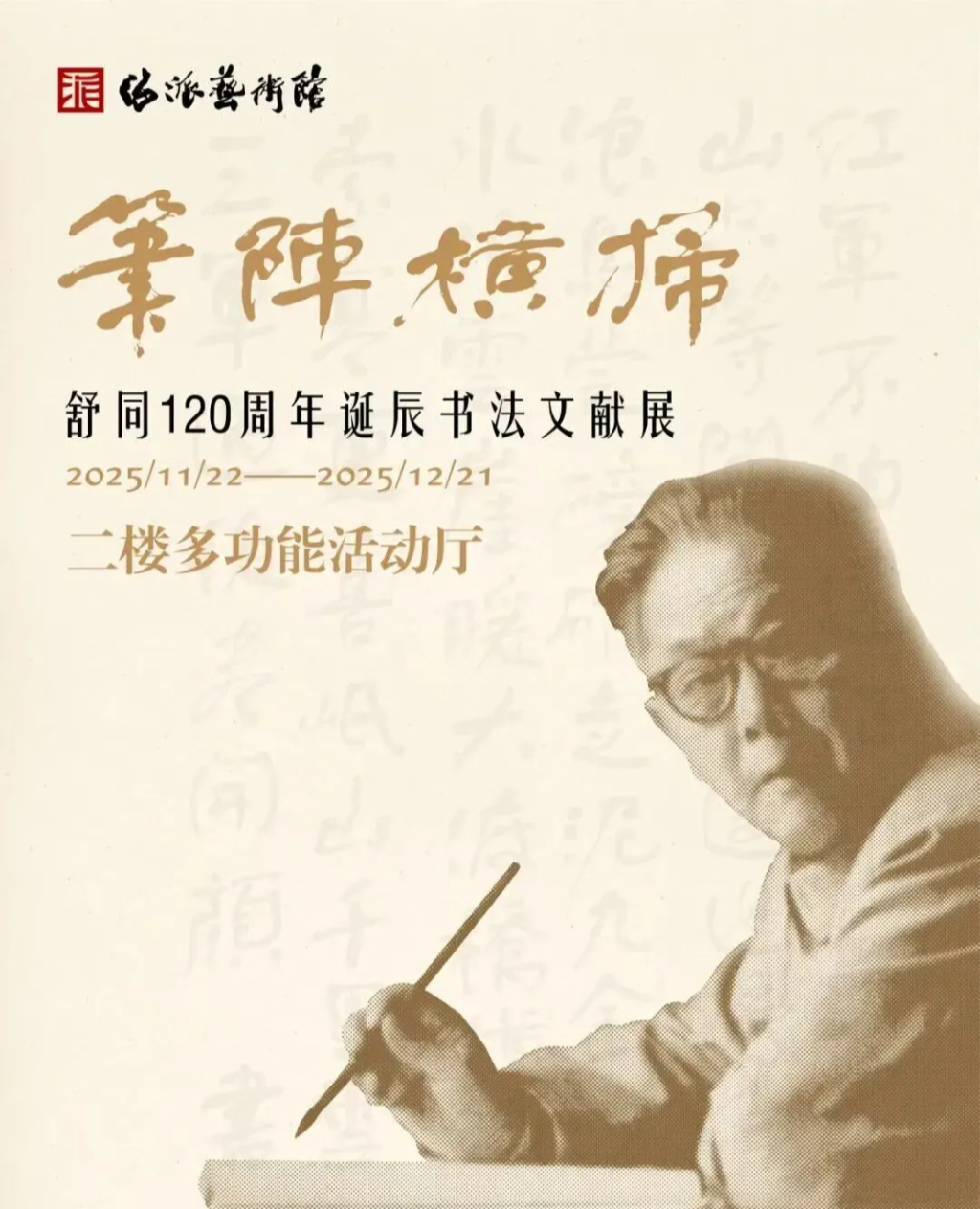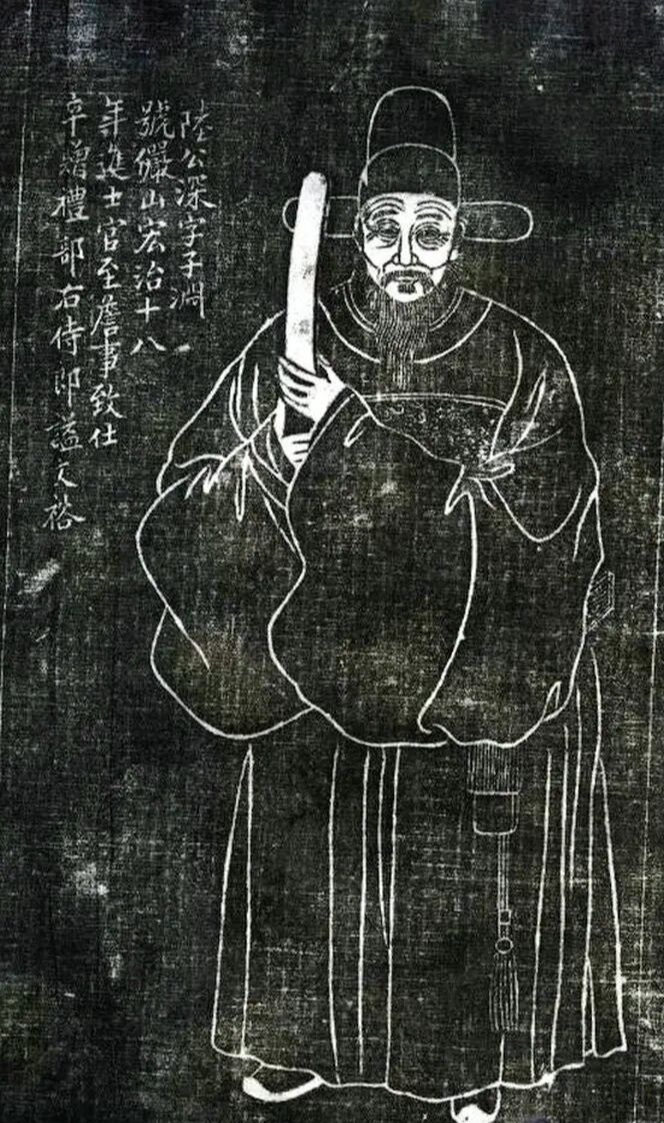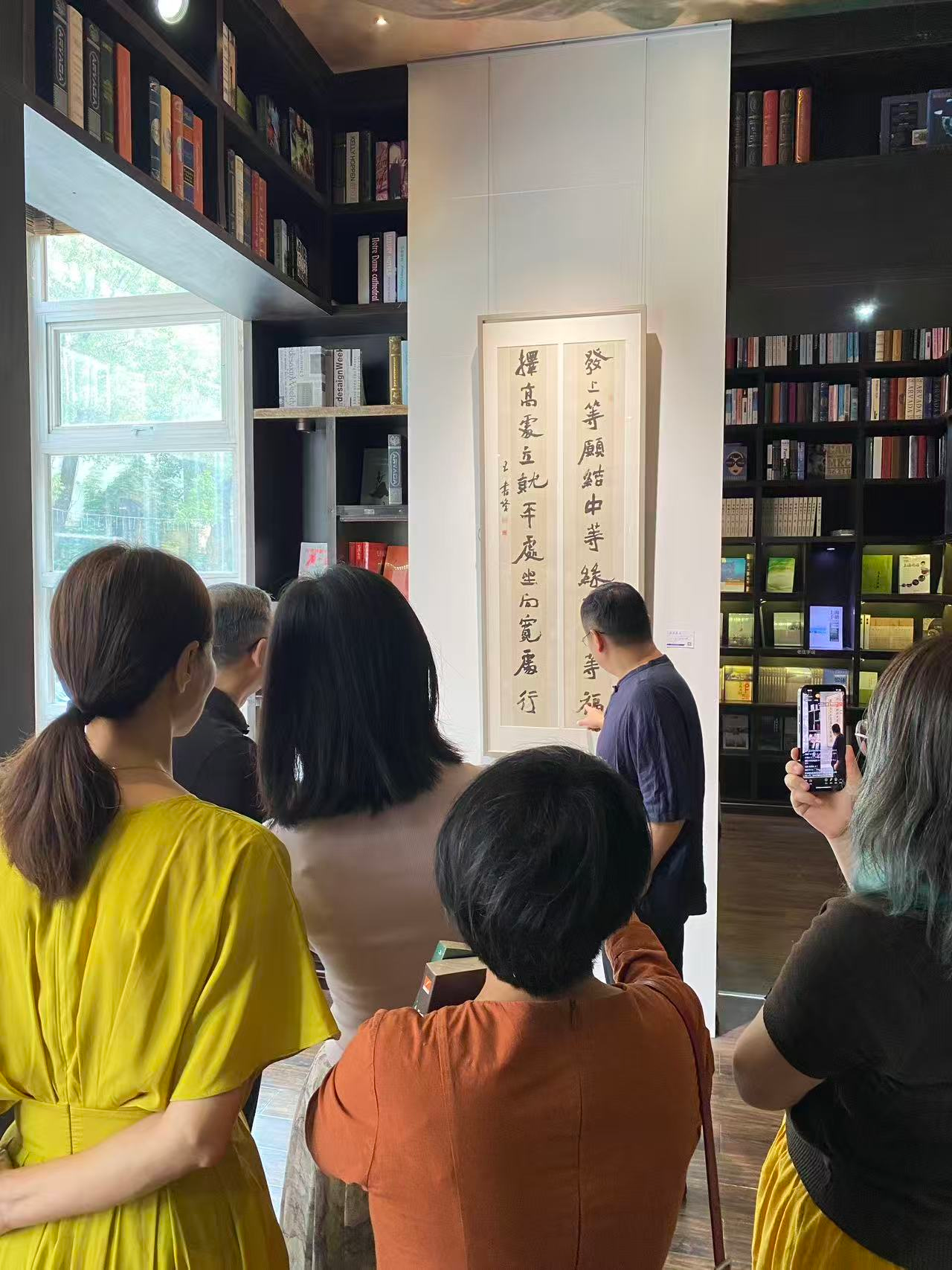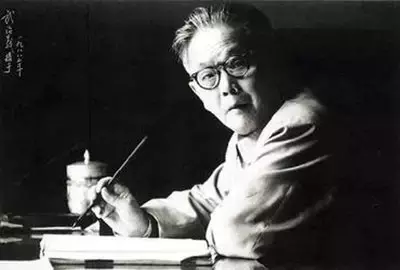
Shu Tong (1905-1998) was both a revolutionary and a great calligrapher. He was the inheritor and pioneer of Chinese calligraphy, the founder and first chairman of the Chinese Calligraphers Association. Mao Zedong once called him a "calligrapher on horseback" and "a pen within the party", and his calligraphy style is also known as "Shu style".
Shu Tong has a deep connection to Shanghai. His calligraphy, inscribed on the city's walls, can be seen everywhere from the railway hub "Shanghai Station" to the school signs of renowned universities such as East China Normal University and Tongji University. His "Shu style" calligraphy has long been woven into the fabric of Shanghai, becoming a part of the memory of Shanghainese culture. The Paper has learned that this year marks the 120th anniversary of Shu Tong's birth. The Shanghai Association of Literary and Art Critics and other institutions will host a calligraphy symposium commemorating the anniversary this fall at the Shanghai Haipai Art Museum, along with an exhibition of his calligraphy works and documents.

Shu Tong (1905-1998)
Shu Tong once said in his memoirs, "My life is a life of revolution and calligraphy."
Shu Tong is a successor and pioneer of Chinese calligraphy, and the founder and first president of the Chinese Calligraphers Association. Chairman Mao Zedong praised him as "a calligrapher of the Red Army and a leading figure within the Party." He is a contemporary master of calligraphy, and his publications include "Shu Tong Calligraphy Copybook" and "Shu Tong Calligraphy Collection." His style, also known as Shu style, draws on the influence of the "Two Wangs," the regular script of Yan and Liu, drawing on the strengths of each, creating a rounded and vigorous style, employing the art of concealing the tip of the brush, and combining ingenuity with clumsiness. His compositional style draws one point from each of the five scripts: regular, running, cursive, seal, and official. In terms of style, he borrows one point from Yan and Liu, and half from He Shaoji, collectively known as "Seven and a Half Points Calligraphy."
Shu Tong has deep ties to Shanghai. After 1949, he served as a member of the Standing Committee of the East China Bureau of the CPC Central Committee and Minister of Propaganda, a member of the East China Military and Political Committee, Director of the East China Cultural and Educational Committee, and President of the East China People's Revolutionary University. His calligraphy is inextricably linked to the Shanghai School of Calligraphy. He not only absorbed the essence of traditional Shanghai calligraphy but also had a significant influence on the development of modern Shanghai calligraphy, leaving behind numerous masterpieces in Shanghai. Over the past decade, "Shu style" has also been entered into computers as a separate typeface and widely used in international and domestic publications.

"Shanghai Station" written by Shu Tong
In addition to the name of Shanghai Railway Station, the names of East China Normal University, Tongji University, East China University of Science and Technology, and Shanghai International Studies University, among others, were also inscribed by Shu Tong. These inscriptions continue to be used today, etched on school gates, emblems, and campus landscapes, and etched into the hearts of generations of students. These school names inscribed by Shu Tong are considered to possess a strong, flowing, and graceful quality, fully embodying the artistic characteristics of "Seven and a Half Points Calligraphy."
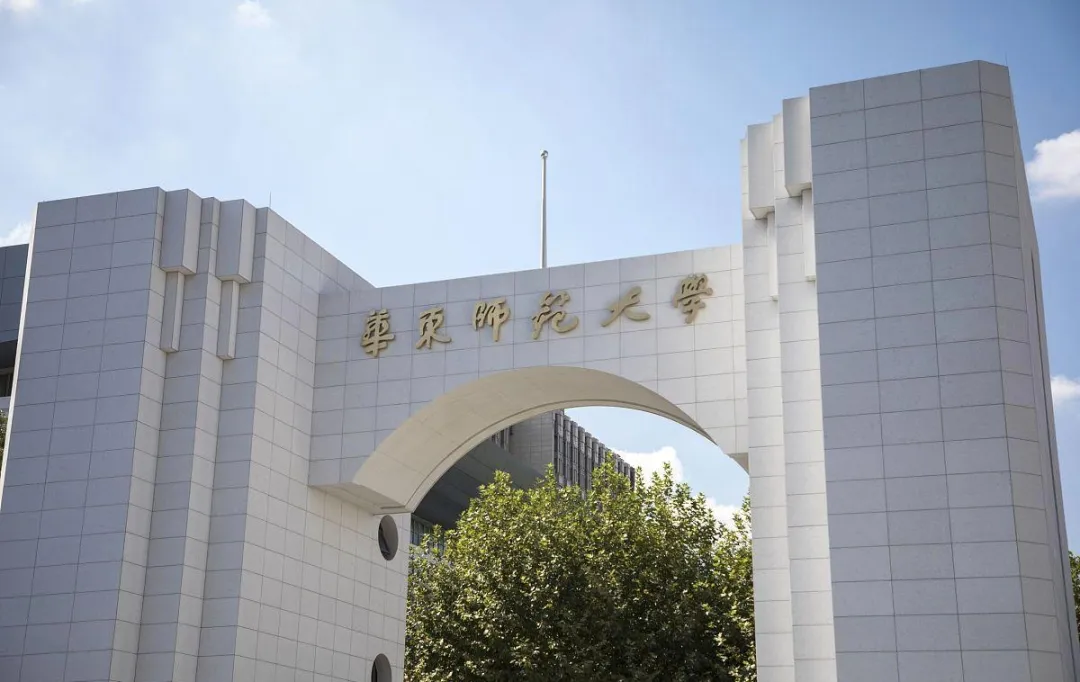
East China Normal University gate

Tongji University
The planners of this exhibition and seminar said that although Shu Tong's calligraphy has been spread throughout the country for a long time, deeply loved by the cultural circles and calligraphy enthusiasts, and has had a huge influence, there are not many academic achievements on how to comprehensively sort out Shu Tong's calligraphy art from different academic dimensions. There is still a big gap between this and his existing rich calligraphy works and artistic achievements. Therefore, this seminar hopes to conduct a relatively comprehensive academic sorting and dissemination of Shu Tong's calligraphy art, and use this seminar to sort out the history of Chinese calligraphy in the 20th century, laying the foundation for in-depth research on the academic significance of Shu Tong's calligraphy and the history of the development of modern and contemporary Chinese calligraphy in the future.
"This year marks the 120th anniversary of Mr. Shu Tong's birth. The passage of two centuries has not dimmed his calligraphy; instead, it has made his spirit even clearer and more resilient amid the passage of time." Zhu Peier, editor-in-chief and president of Chinese Calligraphy magazine, told The Paper that young Shu Tong used his pen as a weapon. Amidst the arduous Long March and the billowing smoke of battle, his ink flew with military flags, carving on humble walls and writing on rough paper. This was no ordinary scholar's leisurely pursuit, but rather a close connection between the very essence of calligraphy and the pulse of the nation's destiny. Between the lines, we can sense the searing passion and fearless spirit of a man fighting for his ideals. He transformed calligraphy from a simple desk ornament into a battle cry, imbuing the art of calligraphy with unprecedented power. "Mr. Shu Tong built upon the majestic foundation of Yan Lugong, ultimately achieving the uniquely distinctive 'Shu style.' He was deeply nourished by the breadth and depth of Yan's style, yet remained unconstrained by it."

The Shu Tong exhibition held in Shanghai many years ago.
From a "calligrapher on horseback" to a pen within the Party
Shu Tong was born in 1905 into a poor family in Dongxiang County, Jiangxi Province. He loved calligraphy from a young age, learning calligraphy at the age of five and gaining local acclaim by the age of fourteen, earning him the nickname "child prodigy" and "Dongxiang talent." He systematically copied ancient inscriptions and calligraphy, emulating masters such as Yan Zhenqing, Liu Gongquan, and He Shaoji. He emulated the ancients without being rigidly bound by tradition, respecting the principles while seeking innovation. He carefully extracted the essence of the works, boldly experimented, and gradually developed his own style, creating the renowned "Shu style," highly acclaimed both domestically and internationally. His calligraphy is characterized by its broadness, elegance, roundness, vigor, and smoothness, characterized by a mature, weighty brushstroke, concealing the beginning and end of each line, and creating smooth, flowing strokes that are unique in their own way.
In 1926, Shu Tong joined the Communist Party of China, becoming the only member in Dongxiang County at the time and serving as the Party branch secretary. In 1930, he joined the Chinese Workers' and Peasants' Red Army, beginning a legendary career blending revolution and calligraphy. During the Long March, Shu Tong used his pen as a weapon, writing large slogans in his spare time amidst the intense fighting to promote revolutionary truths. Lacking paper and pen, he would pick up branches and scribble on the ground; while on horseback, he would trace his lines with his fingers on his trouser legs. Seeing this, Mao Zedong jokingly dubbed him a "horseback calligrapher." Whenever he arrived at a garrison, he wouldn't rest. Instead, he would grab a small bucket and a brush and paint slogans on the roadside walls, promoting revolutionary ideas and boosting Red Army morale. In the arduous conditions of the Long March, Shu Tong, lacking paper and pen, would pick up branches and practice calligraphy on the ground.
"Horseback Calligrapher, a Pen of the Party" was the nickname Chairman Mao Zedong bestowed upon Shu Tong. Shen Peng, former President of the Chinese Calligraphers Association, recalled, "During marches, he would write with his fingers on horseback, hence the nickname 'Horseback Calligrapher.' Sometimes, during group activities or meetings, he would write on his knees, so the right side of his trousers always tore first."

Anti-Enemy Newspaper
During the War of Resistance Against Japanese Aggression, Shu Tong served as Secretary-General of the Eighth Route Army Headquarters and Director of the Political Department of the Shanxi-Chahar-Hebei Military Region. He deeply felt that persevering in the war behind enemy lines required "the perseverance to carve a path through mountains and the spirit of arduous struggle," and his calligraphy gradually developed into his unique "Shu style."
During the Yan'an period, Shu Tong's calligraphy was widely recognized and praised. Yan'an was known for its popular inscriptions and signboards, and besides Mao Zedong, Shu Tong was the most prolific calligrapher. In early 1937, when the Chinese People's Anti-Japanese Military and Political University moved into Yan'an, Mao Zedong drafted the school motto and specifically asked Shu Tong to write the name "Chinese Anti-Japanese Military and Political University" and the motto "Unity, Tension, Seriousness, and Liveliness."

"China's Anti-Japanese Military and Political University" written by Shu Tong
In November 1939, the Shanxi-Chahar-Hebei Border Region solemnly mourned Dr. Norman Bethune, a Canadian doctor who died in the line of duty. Shu Tong wrote the conference logo "Memorial Meeting for Dr. Bethune", the plaque "Auditorium" for the mourning hall, and several elegiac couplets. He then wrote the inscription "Eternal Glory" for Bethune's tomb.
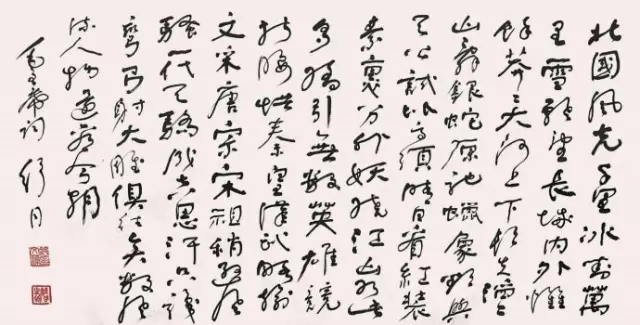
Shu Tong: Poems of Chairman Mao

Inscribed on the East China Martyrs Cemetery: Contributions to the Nation, Names to Be Immortalized in History
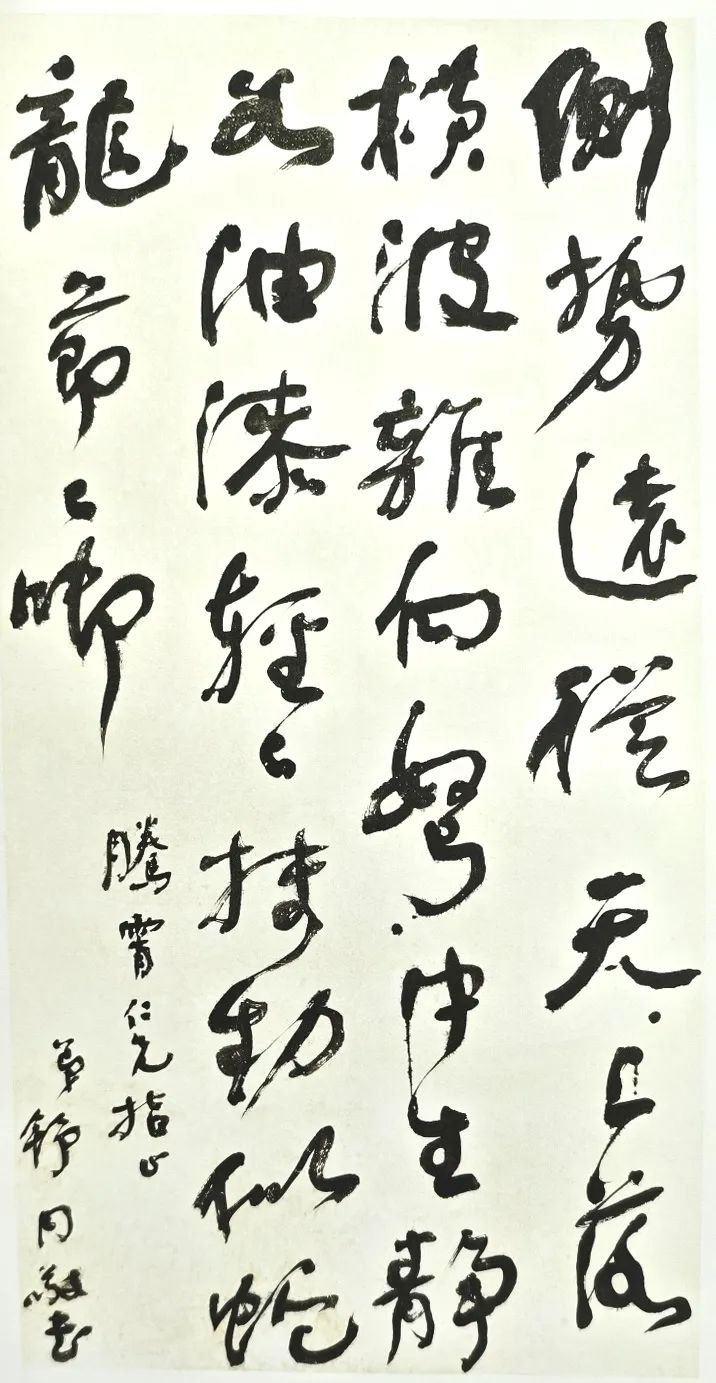
A self-written poem

Shu Tong's letter to Shangguan Zuo
Shu Tong's "one pen" is also reflected in his articles. In his nearly seventy years of revolutionary career, Shu Tong wrote millions of words of editorials, articles and documents. Some important documents during the War of Resistance Against Japanese Aggression, such as "On the Basic Characteristics of Political Work in the Anti-Japanese Guerrilla War Behind Enemy Lines", were drafted by Shu Tong. The "Shu Tong Calligraphy Collection" published by Wenwu Publishing House includes famous articles by Shu Tong from different periods. Such as "The True Face of the Republic of China" on the eve of the Great Revolution, "A Letter to Higashin Seiichiro" written in parallel script during the War of Resistance Against Japanese Aggression, and articles in 1971. As the preface of the book states: "Shu Tong's calligraphy, integrity, and articles will radiate a unique light in Chinese history."
The life of a calligrapher: the practice of using pen and ink to serve the people
In April 1949, Shu Tong joined the People's Liberation Army stationed in Shanghai, where he served as a member of the Standing Committee of the East China Bureau of the CPC Central Committee, Minister of Propaganda, Director of the Cultural and Educational Committee, and concurrently as Editor-in-Chief of the Liberation Daily. He was invited to write plaques for public places and cultural and educational institutions such as Shanghai Station, Tongji University, and East China Normal University.
In 1954, he was transferred to serve as the First Secretary of the Shandong Provincial Committee of the Communist Party of China and the First Political Commissar of the Jinan Military Region. On the eve of National Day in 1959, ten new buildings in the capital were completed. Mao Zedong instructed Shu Tong to write the name of the "National Agricultural Exhibition Hall". Each character was about 4 square meters. The writing was so large that it could lift a tripod or move a mountain.
These inscriptions, imbued with the essence of Yan style, are characterized by grandiose, broad, and profound forms. They blend the circular, flowing brushstrokes of seal and clerical scripts, with the tip of the brush hidden behind the back and the brush strokes centered. Their robust lines, combined with the dynamic and leaping strokes of Liu style and He style, are a masterful expression of the spirit of the times and the national spirit that emerged from the trials of blood and fire, striving to rise from hardship. They convey and elevate the pride, confidence, and self-awareness that marked the rise of the Chinese people.

"National Agricultural Exhibition Hall" written by Shu Tong
In the late 1970s, with the advent of reform and opening up, cultural exchanges between China and Japan began. Japanese calligraphy communities spontaneously organized delegations to visit China to trace the origins of Shu Tong's calligraphy. During these exchanges, Japanese calligrapher Ohira Santo expressed his admiration for the righteousness and dignity displayed in Shu Tong's calligraphy, speculating that this might be related to his military service. Japanese calligrapher Tanetani Senshu read a "philosophical quality" in his calligraphy, concluding that his "heart was always filled with hope, which contributed to his optimism and vitality."
Throughout his life, Shu Tong adhered to the "Three Nos" principle: no solo exhibitions, no collections of calligraphy, and no disciples. He once said, "Although I have endured all kinds of torture and pain, I have not yet lived to this day, having shed blood and sacrificed my life like my fallen comrades. What else can I ask for? I must always maintain the noble moral character of a Communist Party member and be a true Communist Party member."

Shu Tong writing calligraphy
Shu Tong's calligraphy serves as a vital bridge between traditional and modern Chinese calligraphy. As the founder and first president of the Chinese Calligraphers Association, he spearheaded the development of Chinese calligraphy in the new era. His works transcend the limitations of traditional calligraphy, infusing revolutionary spirit and personal grace into his brushstrokes, resulting in a unique style characterized by broadness, dignity, roundness, vigor, and smoothness.
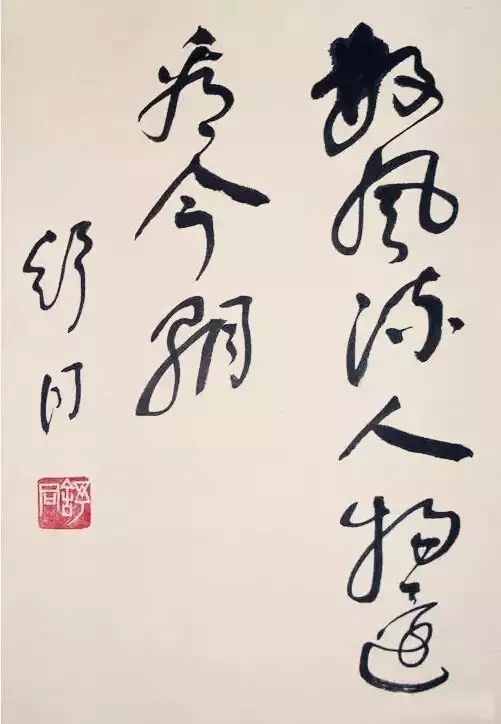
Shu Tong's calligraphy
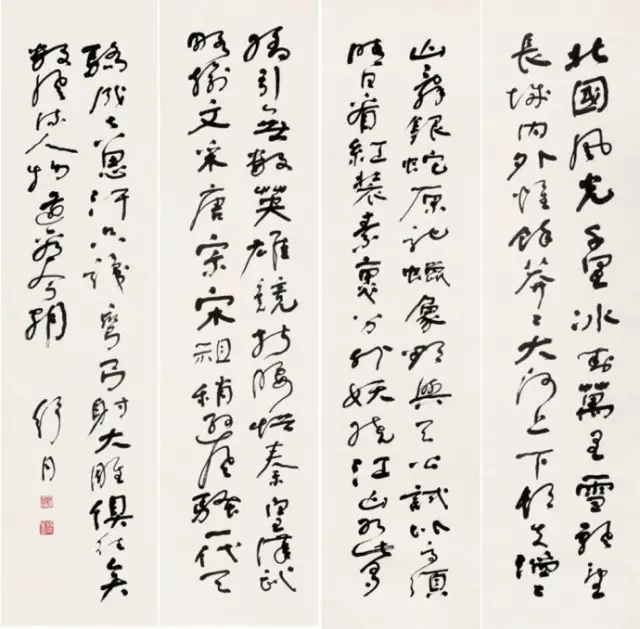
Shu Tong's calligraphy of Chairman Mao's poems
Mr. Qi Gong once wrote an inscription in praise of his calligraphy: "The calligraphy of thousands of years is the same", and the well-known calligrapher Shen Peng commented that his calligraphy is "vigorous yet unrestrained, full of freedom in the standardization, strong and powerful but with a transcendent will."
Zhu Peier believes that his calligraphy is like pine and cypress, with strong bones and a relaxed posture. It conceals a sense of movement within its simplicity and exudes vitality within its strictness. He skillfully transforms the formal atmosphere of Yan Kai's calligraphy into the vigor and freshness needed by the times, retaining the traditional solemnity and solemnity while exuding the vigor of a revolutionary. This creative act of breaking down and then rebuilding is a heartfelt tribute to the millennia-old tradition of calligraphy and a new chapter that transcends the constraints of tradition. As the first president of the Chinese Calligraphers Association, his pioneering contribution lies not only in uniting fellow calligraphers and establishing an organization, but also in his far-sighted vision, infusing calligraphy with the eternal spirit of "writing for the people."
Ma Xiao, former academic director and researcher of the Teaching Department of the China National Academy of Painting, believes that he became one of the few calligraphers in Chinese calligraphy history since the Song and Yuan dynasties who contributed to the continued development of regular script. "To be more precise, he is the calligrapher who, after He Shaoji of the Qing Dynasty, once again carried forward the Yan (Zhenqing) style and pushed it to a new level."

Shu Tong Literature
Shu Tong also possessed far-sighted insights into calligraphy education. He once stated, "We must prioritize the study of calligraphy theory. Many calligraphers focus solely on practice, copying, and technical innovation, while neglecting the study of calligraphy theory and the cultivation of literary and artistic talent." In his later years, he also painted plum, orchid, bamboo, and chrysanthemum, capturing his inner nature.
It is reported that the academic commemoration and seminar to be held at the Shanghai Haipai Art Museum will also select Shu Tong's calligraphy masterpieces and documents from different periods for exhibition, covering his early works that showed his brilliance, his middle-aged masterpieces that were calm and majestic, and his calligraphy and paintings that returned to nature in his later years.
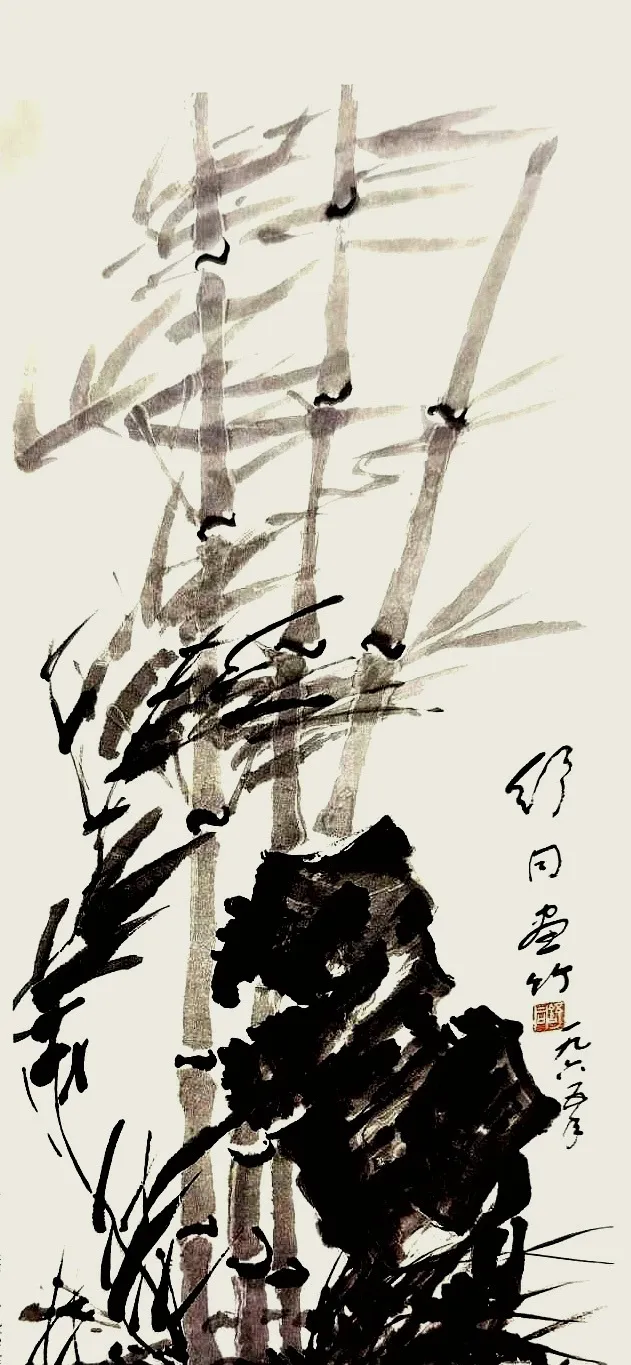
Shu Tong's Bamboo Painting
"We hope that through this exhibition, more people will be able to approach Mr. Shu Tong's artistic world, appreciate the eternal charm of Chinese calligraphy, and draw spiritual strength from it. We hope that every visitor can feel the warmth of art and the echo of the times in these powerful handwritings that can be seen through the paper," said the organizers of the commemorative event.
